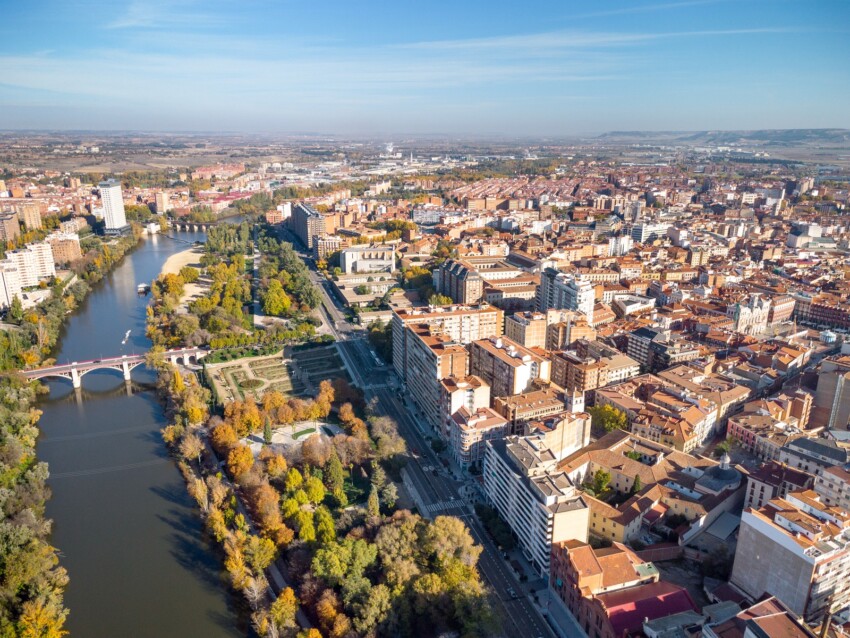

Valladolid is a lively city crossed by the river Pisuerga in the region of Castile and Leon, often used by tourists as a stopover for the most famous places in northern Spain. It is also easily reached from Madrid thanks to good train connections and is therefore a destination to consider for a day trip.
It may not boast impressive monuments such as the aqueduct of Segovia or the Alcazar of Toledo, but it can boast of illustrious citizens and historical events: Miguel de Cervantes and Christopher Columbus lived here for a few years, King Philip II was born here and the marriage of the Catholic kings Isabella of Castile and Fernando of Aragon took place here in 1469.
Its glorious past has left precious historical evidence, a couple of interesting museums and a centre full of churches and stately palaces; in the present Valladolid is a university town with a lively nightlife, with residents and students alike thronging the city centre’s bars. Join them for a real Spanish night out.
Valladolid’s central role in the history and culture of Spain has bequeathed a rich heritage of palaces, museums and monuments. Here are the most interesting ones.
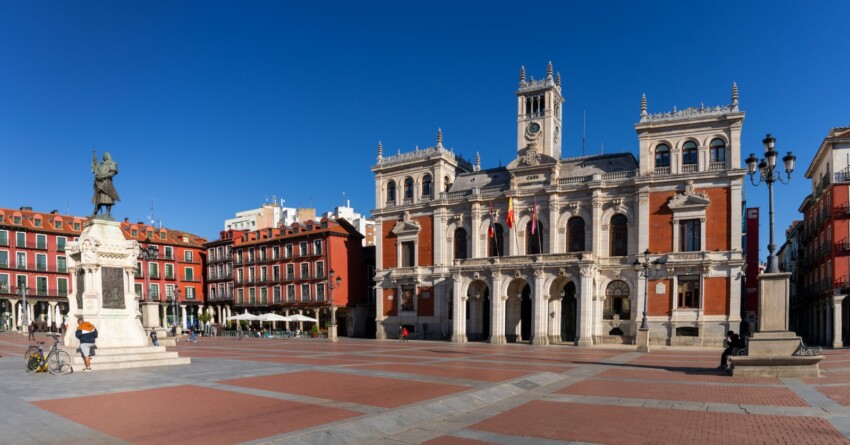
The Plaza Mayor is the beating heart of Valladolid and one of the most significant examples of Castilian civil architecture. This rectangular square, surrounded by elegant arcades, has witnessed centuries of Spanish history, from Inquisition executions to royal celebrations. The majestic Town Hall building, built in the 19th century, dominates the northern side with its imposing neoclassical façade.
The arcades of the square are home to numerous historical cafés and restaurants where you can enjoy the famous Valais tapas. During the festive season, the square is transformed into the centre of the city’s celebrations, hosting Christmas markets, summer concerts and the impressive Holy Week processions. On summer evenings, when the sun sets and the lights of the street lamps illuminate the arcades, the square offers a particularly impressive spectacle.
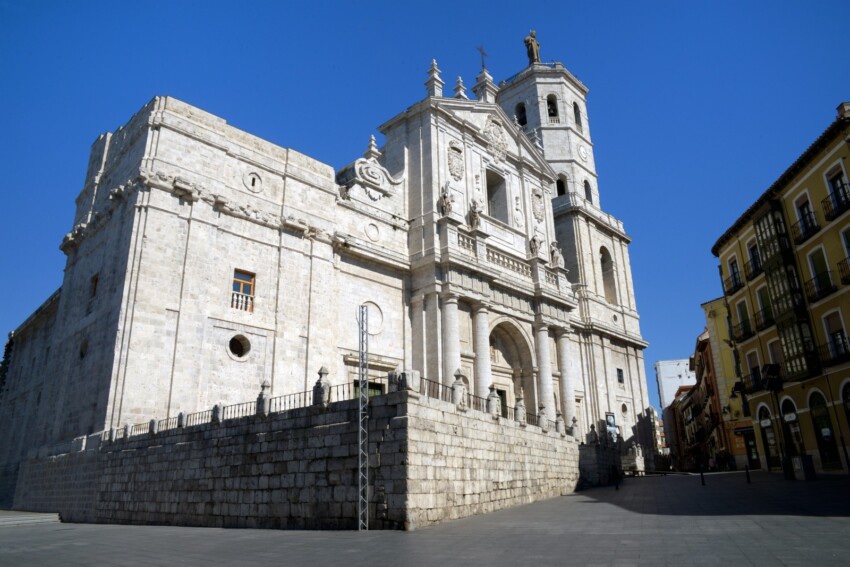
The Cathedral of Our Lady of the Assumption, designed by the famous architect Juan de Herrera, is one of the finest examples of Herrerian architecture in Spain. Although left unfinished, its majestic façade and grandiose proportions make it one of the city’s most impressive monuments. The original design envisaged a church even larger than the present St. Peter’s in the Vatican.
Inside, the Museo Diocesano e Catedralicio houses a valuable collection of sacred art, with works by Juan de Juni and Alonso Berruguete. Of particular interest is the silver processional case, a masterpiece of 16th-century Spanish goldsmithing. The ascent to the bell tower offers a breathtaking panoramic view of the city and the Pisuerga Valley.
The cathedral also houses important works of art, most notably the main altarpiece, created by Juan de Juni in the 16th century. During Holy Week, the building becomes the centre of religious celebrations, with processions and ceremonies attracting visitors from all over Spain.
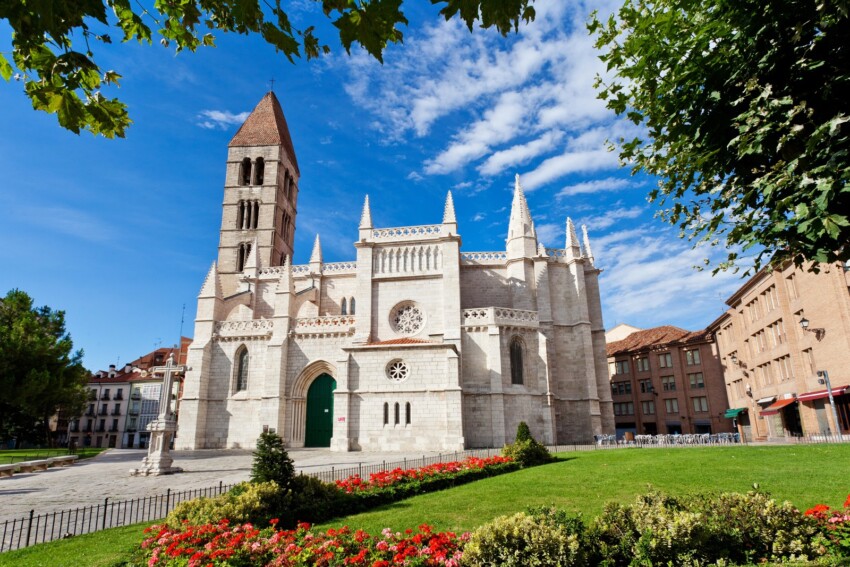
The Church of Santa María de la Antigua is one of the jewels of Romanesque-Gothic architecture in Valladolid and one of the oldest religious buildings in the city. Built in the 12th century, it stands out for its elegant 60-metre high Gothic bell tower, considered one of the most beautiful in Castile. The bell tower, with its characteristic twin windows and pierced spire, has become one of the most recognisable symbols of the city skyline.
The building presents an interesting combination of architectural styles: the original Romanesque structure has been enriched over the centuries with Gothic and Renaissance elements. Of particular note is the Romanesque portico on the south side, richly decorated with geometric and plant motifs. Inside, the main altarpiece from the 16th century by Juan de Juni and the Chapel of Christ, which houses a venerated wooden image from the 13th century, deserve special attention.
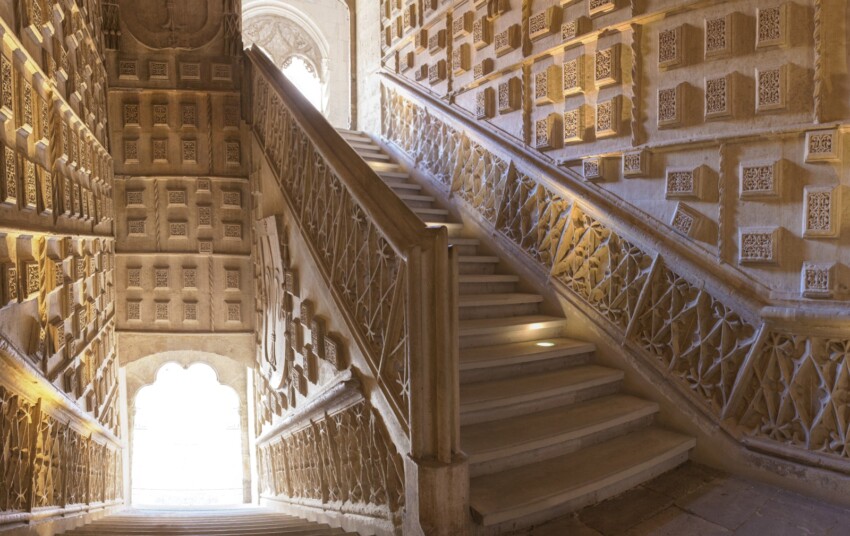
One of the most beautiful buildings in Valladolid is the National Sculpture Museum: housed in the splendid 15th-century Flemish Gothic style College of St. Gregory, it boasts an exceptional collection of polychrome wood carvings from the 13th to the 18th century, to which a collection of artistic reproductions has been added in recent years.
The museum rooms display masterpieces by artists such as Alonso Berruguete, Juan de Juni and Gregorio Fernández. The collection makes it possible to follow the evolution of Spanish sculpture through the centuries, with particular emphasis on the golden age of the Castilian school. The cloister of the college, with its elaborate Gothic decoration, is a work of art in itself and offers moments of peace and contemplation during the visit.
The museum covers three historical buildings, each with its own architectural characteristics: in addition to the College of St. Gregory, it includes the Villena Palace and the Casa del Sol. Temporary exhibitions and regularly organised cultural events make the museum a lively and constantly evolving cultural centre.
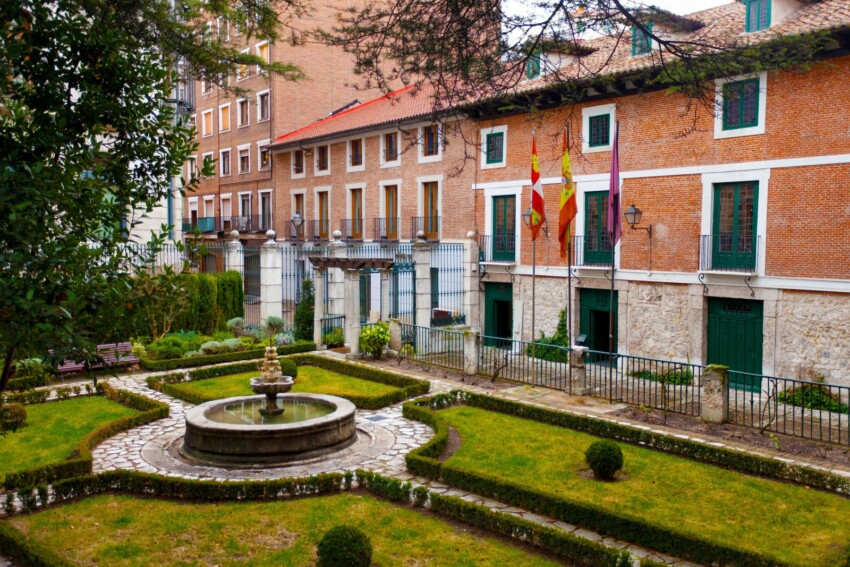
The Casa de Cervantes is an obligatory pilgrimage for lovers of literature. In this 16th century mansion, Miguel de Cervantes completed his masterpiece ‘Don Quixote de la Mancha’ during his stay in Valladolid in 1605. The building has been carefully restored to recreate the atmosphere of the time, with furniture and everyday objects from the period.
The museum offers an interesting insight into daily life in Siglo de Oro Spain. Particularly impressive is the study where Cervantes is believed to have written part of his most famous novel. The garden, with its medicinal and aromatic plants typical of the period, completes the visit by offering a glimpse into 16th-century botany.
Guided tours allow visitors to explore not only the life of the author but also the historical and social context of 17th century Valladolid. The museum regularly organises educational and cultural activities, making it a particularly interesting stop for families with children.
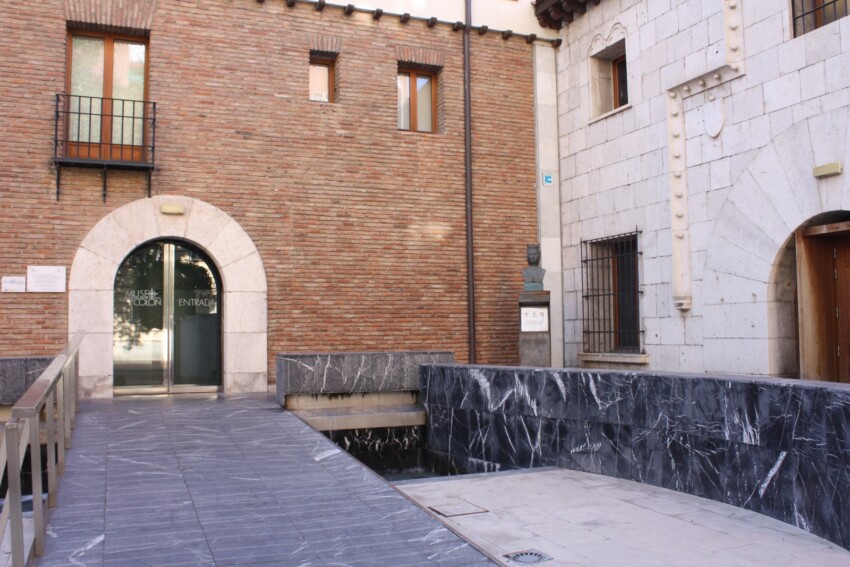
Relive the historic voyage of discovery of the Americas by visiting the Casa-Museo de Colón, a four-storey museum dedicated to the Genoese navigator Christopher Columbus, who died in Valladolid in 1506.
Through audiovisual material, historical documents, sculptures and well-kept information panels, you can take a leap back five centuries and learn about the stages that led to the historic discovery and what happened afterwards. The top floor of the museum is entirely dedicated to the city of Valladolid at the time of Christopher Columbus.
The museum building, constructed in 1965, echoes the Isabelline Gothic-style palace where Diego Columbus, the explorer’s son, lived in Santo Domingo.
The Campo Grande is Valladolid’s main urban park and is an oasis of peace in the heart of the city. At 115,000 square metres, it offers visitors tree-lined avenues, well-kept gardens and numerous attractions that make it perfect for a relaxing break while visiting the city.
The park is famous for its peacocks that roam freely among the paths, its monumental fountains and its rich vegetation that includes rare and centuries-old species. The Cascada de la Fuente del Cisne is one of the most photographed spots, while the French gardens and sculptures scattered around the park create picturesque corners.
During the summer, the Campo Grande hosts open-air concerts and cultural events, becoming the centre of the city’s social life. Children’s play areas and cafés with terraces make it a perfect destination for families.
In the following map you can see the location of the main places of interest mentioned in this article.
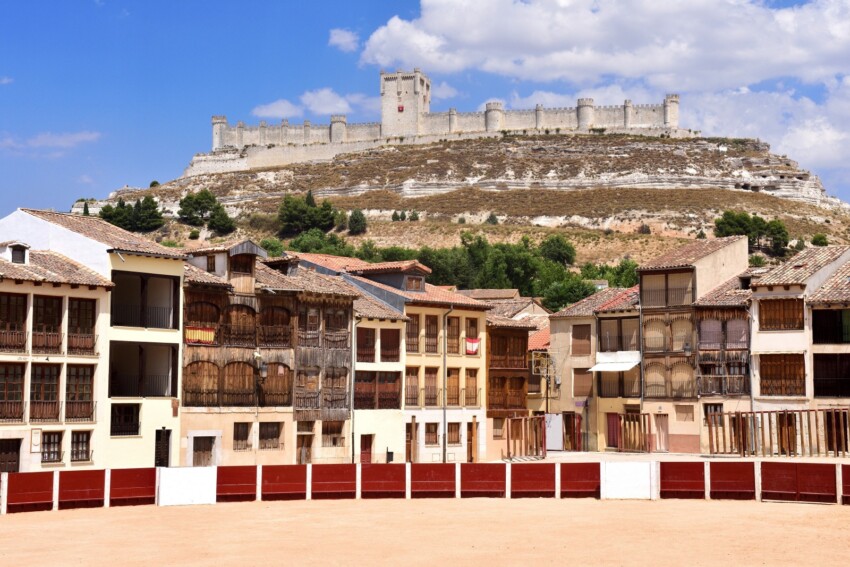
Valladolid’s central location in the Castilla y León region makes it an ideal base for exploring some of the most fascinating destinations in northern Spain. Hiring a car is recommended for convenient access to the many attractions in the surrounding area, from historic vineyards to medieval castles.
The Castle of Peñafiel, located 56 km from Valladolid, is one of the most spectacular medieval castles in Spain. The fortress, which houses the Wine Museum, dominates the town and is surrounded by some of the best vineyards in the Ribera del Duero. A visit allows you to combine medieval history and wine culture, with tastings in the area’s many historic wine cellars.
Only 15 km from Valladolid, Simancas is home to the Archivo General, one of the most important historical archives in Europe. The 15th-century castle that houses it is a perfect example of military architecture transformed into a documentary repository. The guided tour allows you to discover original documents that have marked the history of Spain and Europe.
Tordesillas, 30 km from the city, is famous for the Treaty that divided the New World between Spain and Portugal. The Real Monasterio de Santa Clara, a former Moorish royal palace converted into a convent, houses valuable examples of Mudejar art. The city also has interesting medieval churches and a Roman bridge over the Duero.
The Ribera del Duero is one of Spain’s most prestigious wine appellations. Less than an hour from Valladolid you can visit some of the region’s most renowned wineries, many of which are housed in historic buildings or modern architecture designed by internationally renowned architects. Visits include tastings and the opportunity to buy wines directly from the producers.
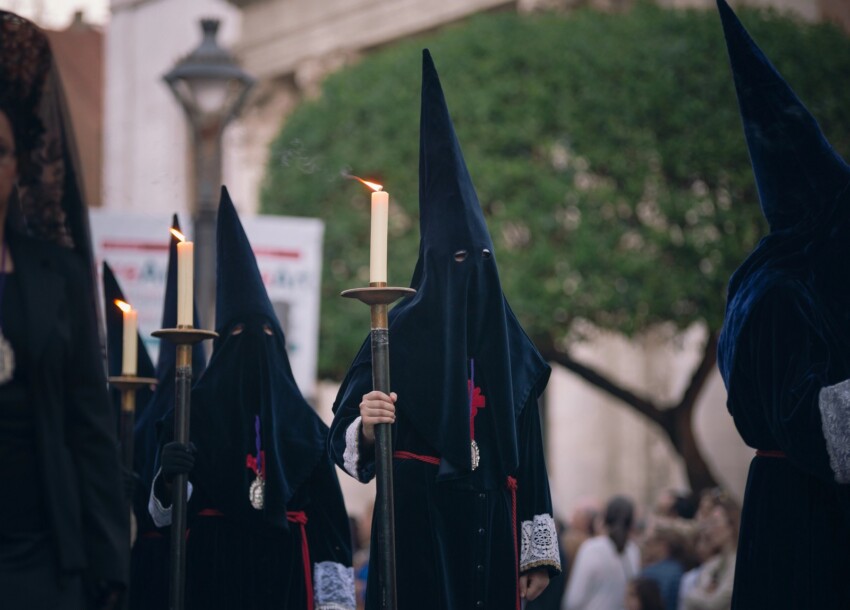
Perhaps due to the presence of an important university, Valladolid is a culturally lively city with a rich programme of events throughout the year.
Amongst them are TAC, the International Theatre and Street Arts Festival held every year in May, and Seminci, Valladolid’s international film festival, considered one of the most important in Spain.
Very heartfelt are the Holy Week celebrations, in which the citizens participate with devotion and passion. If you are in the area at Easter, don’t miss the city processions. You can admire some of the most beautiful sacred representations in Spain and experience a very special festive atmosphere.
Valladolid is a great place to break up a trip between Madrid and northern Spain. If it is part of your itinerary, we recommend you choose accommodation in the centre: it is a very lively city, thanks to its university, especially in the evenings. This area, which stretches around the Plaza Mayor, is full of boutique hotels built out of old aristocratic palaces. The central location allows you to walk to all the main attractions and enjoy the city’s lively nightlife.
The district of San Martín, located north of the centre, is a quiet but well-connected residential area. Here you will find international chain hotels and tourist flats, ideal for families seeking more space and tranquillity. The presence of supermarkets and services makes it particularly convenient for longer stays.
The station area offers cheaper but still good quality accommodation. Perfect for train travellers, this area is connected to the centre by frequent buses and the modern bike-sharing network. Its lower prices make it attractive to young couples and travellers on a tight budget.
Valladolid enjoys a strategic location in the heart of northern Spain, well connected with the country’s main cities. Its efficient transport network makes it easily accessible for both national and international travellers.
Valladolid Airport is located 12 km from the city centre, in the municipality of Villanubla. It mainly operates national flights to Madrid and Barcelona, as well as some seasonal connections to international destinations. A bus service connects the airport with the city centre every hour, with a journey time of about 20 minutes. Taxis are a faster alternative, with an average cost of EUR 30-35.
The Spanish High Speed Train (AVE) connects Valladolid to Madrid in only 55 minutes, with several daily trips. The Campo Grande station, located a few minutes’ walk from the historical centre, is also served by regional trains that connect the city with other destinations in Castilla y León.
Those arriving by car can use the A-62 motorway that crosses the region from east to west, connecting Burgos with Salamanca. From Madrid, the A-6 motorway followed by the A-601 offers a direct connection in about two hours.
What's the weather at Valladolid? Below are the temperatures and the weather forecast at Valladolid for the next few days.
Beautiful Valladolid is located in the Castile and León region, of which it is the de facto capital. It is also the capital of the province of Valladolid. It is about 2½ hours from Madrid and about the same distance from the Portuguese border.